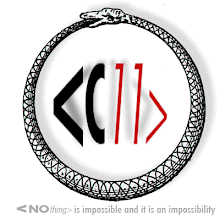
In the 1970s it was fashionable to start to consider
“stakeholders” in planning and management processes. At the time it was intended to be an
inclusive notion but very quickly some of these stakeholders began to assert precedence over others
– they demanded ranking and privileges to match.
Very quickly their concerns were accommodated and as a consequence before anyone could be considered a stakeholder they needed to demonstrate a ‘legitimate interest’ – a pecuniary interest, an ownership, a potential loss of something, whatever. Stakeholdership quite quickly became at once an elastic concept and an idea in retreat – more often than not, one that served some more than others.
Rarely does the idea of ‘obligation’ come into the stakeholder equation but ‘rights’ are regularly asserted – albeit so often self defined. Stakeholdership is an untidy and contentious idea to say the least! It is especially so if you are left out of the loop.
However there is another way, and more inclusive way, to think about all this. If we think about Museum & Art Galleries (Cultural Institutions & Enterprises) as having Communities of Ownership and Interest– layers of cognitive owners including stakeholders – we might then begin an interesting conversation with each other in regard to resource management and cultural values.
There is no need to invent and then market this idea as if it were some new idea as clearly
Public Museums and Art Galleries have an extraordinary Communities of Ownership and Interest
(COI). All that really needs to be done is:
- Identify the COI membership – individuals, groups, institutions, communities;
- Acknowledge and celebrate the COIs presence; and
- Begin the conversation!
That might seem to be a job for a consultant but not really
– they have not delivered yet. It isn’t rocket science! It is simply about making a list and being prepared to continually add to it and act upon it.
Mapping the ‘ownerships’ shared in the cultural and intellectual property – cultural knowledge – enriches them rather than diluting or downgrading them. Nonetheless the tensions between Freehold Property, 'The Crown', Cultural Property and the Public Domain will not dissolve. However, they may be managed in more productive ways when these layers of ‘ownerships’ are acknowledged alongside all others in the cognitive ownership layering.
Do institutions shape our culture?
Or, do our cultural realities shape our institutions?
Acknowledging a COI is a cultural mindset. It is not a bureaucratic process – rather it is a participatory process. The cognitive ownership model demonstrates the richness of places – museums here – as an alternative to the poverty of perspective embedded in adversarial and unconsultative bureaucratic planning processes.
An audit of cognitive ownerships would reveal the confluences and conflicts in ownership claims. If we abandon the notion that there can be a hierarchical structure to the ownership of place, – museums here again – it is possible that managers of cultural property can begin:
• To work towards accommodating competing claims in the context of coexistent cognitive ownerships;
• To resolve conflicts and tensions over usage and access; and
• To establish appropriate planning processes and management systems that engage with the Community of Ownership and Interest.
Who are these cognitive owners? The simple answer is almost everyone but a list of them must be
inclusive rather than exclusive or privileged and it must be an
‘open list’. More important than knowing
'who the owners are' is knowing
what their interest and ownerships are –
and the cultural context in which an ownership is claimed. Knowing that allows for the accommodation of inclusive and holistic planning and management processes.

















